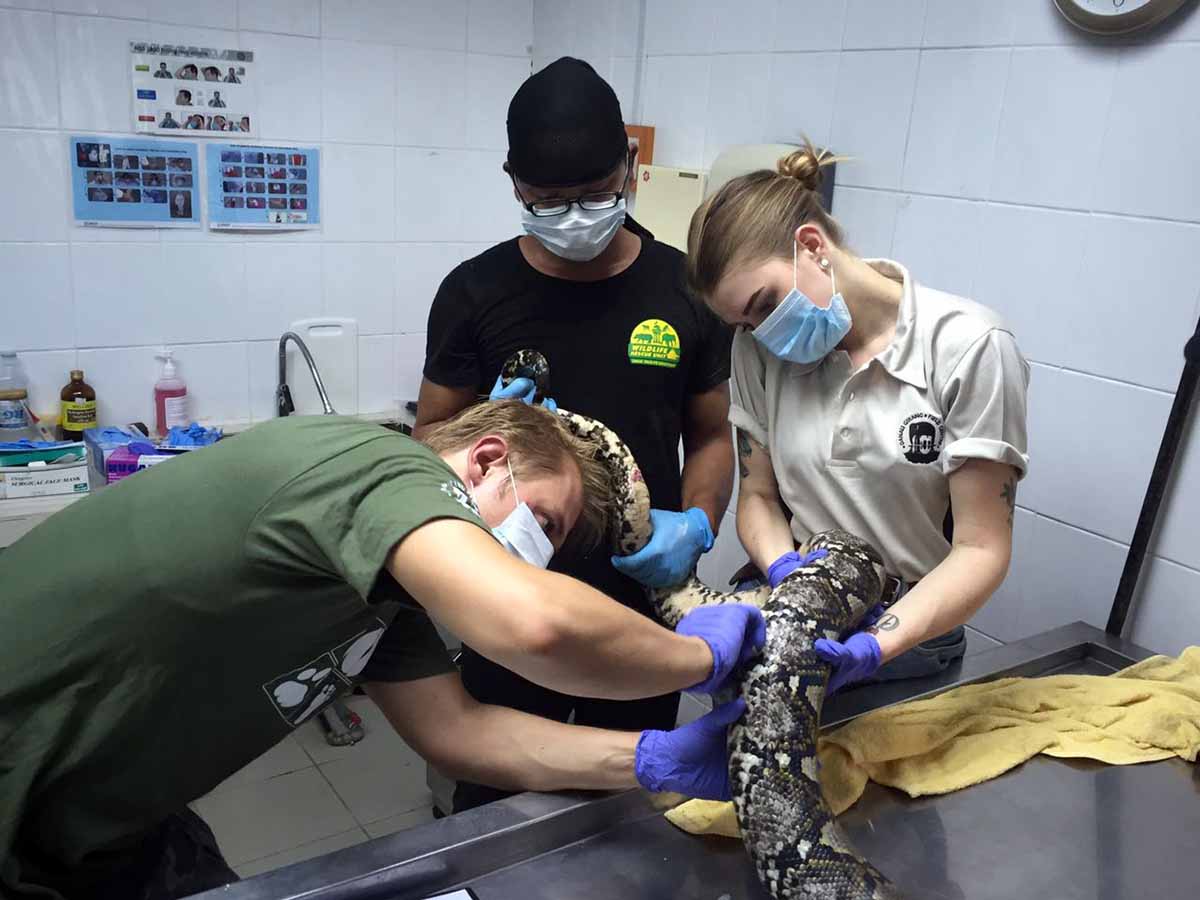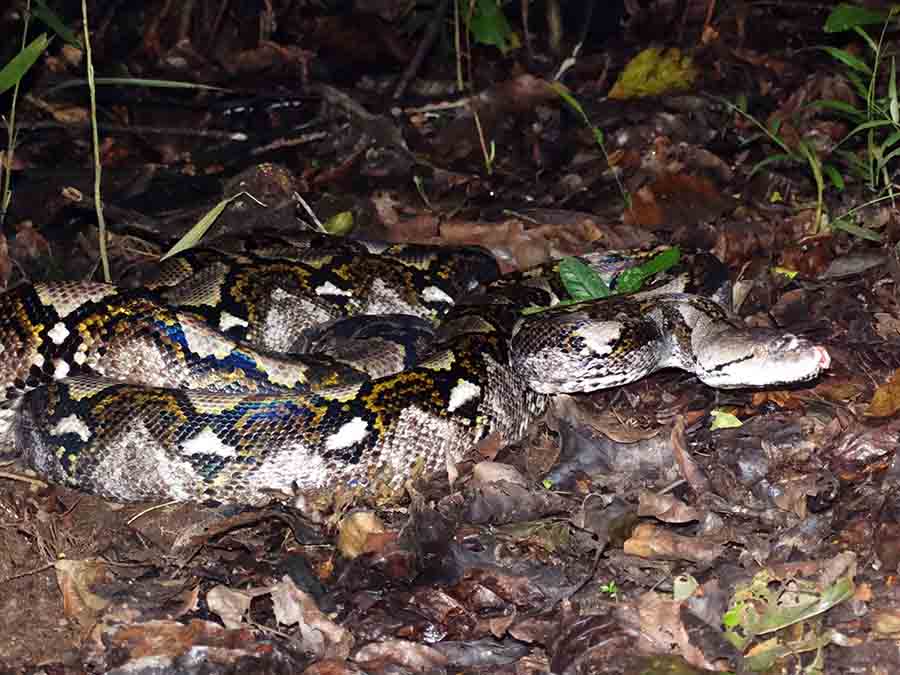A Study of Reticulated Pythons in the Kinabatangan – Coping with an Altered Landscape
About
PhD Candidate: Richard Burger
Institution: Cardiff University
Supervisors: Benoit Goossens, Luke Evans
Research Questions and Methods:
We initially designed a suitable survey method to locate, mark and recapture pythons in various habitats. Standardisation was important to accurately represent population density and allow us to monitor changes over time. Microhabitat characteristics were also measured to look for habitat preferences.
Animals were surgically implanted with GPS tags to track their movements over time accurately. This provided information on home range size and activity patterns, which was important for understanding the landscape-level requirements of this species and helped identify conservation strategies. Using GPS tags, rather than the more commonly used telemetry, allowed easier tracking of multiple individuals in a landscape that is difficult to traverse, allowing more accurate long-term monitoring of individuals, as tagged individuals would not need to be located daily.
As large generalist predators, pythons play a key role in the ecosystem, and understanding their diet was important to look at their effects on other species and potential benefits as controllers of pest species in plantations. We adopted non-invasive techniques to study their diet by analysing the fragmentary DNA remains of prey left in faeces, either using species-specific primers to analyse the predation incidences on important target taxa using PCR, or by using next-generation sequencing to get a picture of all the prey species which were encompassed within their diet.
Previous work on reticulated python diets used stomach analysis of animals caught for the skin trade, so it may have had inherent biases (snakes captured close to human habitation), and some remains are not identifiable this way due to degradation.
We conducted interviews and questionnaires with a wide range of locals that assessed attitudes towards snakes in general, measured the degree to which pythons are collected for skin or meat, and the impacts of snakes upon people, such as snake bites or livestock predation. It is important to estimate the number of snakes being killed or captured when analysing differences in populations in different habitats and future conservation efforts. To look at how we might consider establishing an education programme that limits deliberate killings of snakes, we must first understand the degree to which this occurs and how people might react to such an undertaking.
Outcomes:
We established a suitable method to monitor changes in population dynamics over time, which was useful as part of DGFC’s overall aim of looking at the landscape-level requirements of key species and helped provide an overall assessment of the conservation status of the species. By looking specifically at the effects of oil palm plantations on aspects of the ecology of this species, we gained a better understanding of how it might be affected across its range in Southeast Asia as its natural habitat becomes increasingly fragmented and altered.

Tagging a reticulated python ©DGFC

